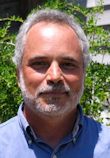
SWANSBORO – After pulling up to one of the many small, uninhabited islands dotting the waters near downtown on Valentine’s Day, a crew of around half-dozen men carrying 42-gallon black contractor trash bags hopped off one of two boats at the shore.
They worked their way across the marsh and into the trees on the island near Huggins Island, collecting a range of trash, from as small as a hunk of Styrofoam to as large as a few feet of pontoon boat fence.
Supporter Spotlight
The commercial fishermen and others who that day called the waters their “office” will be working on public land for the next few months.
The crew has been contracted by the North Carolina Coastal Federation as part of a Hurricane Florence recovery effort, a large-scale cleanup project underway to remove the marine debris the September 2018 storm hurled across parts of the coast. The first phase of the 2019 Post Hurricane Florence Marine Debris Collection Project, which began Feb. 11, has the contracted watermen working through the end of March focusing on Carteret and Onslow counties.
Crew leader Matthew Littleton, captain of Friendly City Fishing Charters based in Swansboro, has been with the project since it began.
Littleton said that everyone on the team, including himself, is a commercial fisherman or works the water in the Swansboro area. The team includes project leader Tim Simpson, Howard Littleton, Joseph Sewell Sr., Brad Scott, Kelly Maxwell and Chris Briley.
In the first five days of the project, the team picked up the islands lining the waterway from East Channel to the mouth of Queens Creek. “Looking at it from the mainland, we have covered from Cedar Point to the Queen’s Creek side of Hubert. Broken down we have covered seven islands in the five working days,” he said in an email last week.
Supporter Spotlight
Littleton told Coastal Review Online in a follow up email Thursday that the group, between Feb. 18-21, had collected debris from Ski Beach in Bogue Inlet Channel, to the Hammocks Beach Ferry Channel and planned to begin on Huggins Island Friday, Feb. 22.
Littleton said he hopes the cleanup effort has a lasting impact on the regular watermen in the area.
“The project has already drawn lots of attention from boaters, commercial fisherman, and recreational anglers in the area. I want to use this project to show everyone the true impact we have on the islands and coast,” he said. “If we can use this project, and the attention it has garnered, to influence other watermen to grab that bag of trash they see while they are out, to turn around to grab that bottle that flew out of the boat, and just be generally more conscientious of the everyday negative or positive impact we who spend the most time on the water can have.”
Coastal Federation Executive Director Todd Miller said the cleanup was orchestrated to remove all kinds of debris from coastal waters and public lands that would otherwise be left if not for the program, including chemically treated lumber that is considered hazardous waste by the Environmental Protection Agency. “Much of this material has exposed nails and other hazards that could cause serious injury to people that use our waterways and islands.”
The federation plans to contract work to remove larger material like pieces of docks and other construction-related items using mechanical equipment and barges.
“We also anticipate that some abandoned boats will be removed,” Miller said.
He added that he thinks that this is the first large-scale coastal cleanup of this nature that has ever occurred. “It is the first time that our public lands and public trust areas have gotten this type of housekeeping attention.”
Miller said that the project will “eventually expand to the entire coastal region that has been impacted by Hurricane Florence and potentially tropical storm Michael.”
The program is part of the marine debris cleanup effort funded by the North Carolina General Assembly with a $400,000 appropriation as part of its post-Florence disaster bill, he explained.
The General Assembly provided the initial funding last fall. The legislature also approved another $250,000 in state money for the North Carolina Division of Coastal Management, contingent on whether the agency can leverage that money with federal funds for such cleanups.
“The division is working with the federation right now to secure funding from the Natural Resources Conservation Service under its Emergency Watershed Program. Total federal and state funding might eventually exceed $1 million, and this will allow for a massive scrubbing of the coast and the potential removal of many of the sunken and abandoned vessels that now litter our waterways,” Miller added.
Littleton learned about the cleanup from Rachel Bisesi, education coordinator at the federation’s central office in Ocean, while he was participating in the federation’s 2019 Crab Pot Removal Project earlier this year. He worked in the White Oak River, Queens Creek and marsh by Hammock Beach State Park.
“After she gave me some details about the project I was immediately interested. The North Carolina Coastal Federation is always making great efforts to maintain a healthy coast, and given the opportunity to help clean up and maintain that in the same area where I grew up, live, and work, I jumped at the opportunity,” he said.
Littleton explained that while there’s a great deal of debris on the islands caused by Florence, the amount of litter that has been left on the islands is alarming.
On the first island they visited, someone had been living there for nearly a year before Hurricane Florence. “There was anything and everything you could find in a home on the island, even a full-sized refrigerator,” as well as a portable toilet tethered to a tree.
“The second group of islands yielded a boat motor cowling, dock power pedestal, marine gas tanks, liquid propane tanks, and even an outdoor picnic or dining table from a fast food restaurant. Bottles, cans, tennis balls, golf balls, shotgun shells, Styrofoam, sheet metal, home siding and more flip flops, sandals and crocs than you can imagine, but never a matching pair,” he said.
Littleton explained that everyone on the crew was loosely acquainted from the industry, but the project gave them a chance to work together.
“Everyone cares deeply about the area, having grown up and worked here. I have lucked into the best team I could have ever asked for on this project. One large part to how much progress we have been able to make is the pride the team is taking in the work being done,” he said. “It is an immensely rewarding feeling to know that you are a part of a project that is not just rewarding to yourself, but to everyone with ties to the coast and the generations to come. We have a great dynamic and all work incredibly well together. I’d take my team against any other cleanup crew.”
The federation reached out to project leader Simpson with Lady Swan Tours to see if he would be interested in helping with the cleanup project.
“Since my business is related to our local waters, I was very excited to have the opportunity to get involved,” Simpson said. “I am also very glad the project targeted some of our local commercial fishermen to be involved since the hurricane has had a huge impact on their livelihoods.”
With this project, he hopes they can make a “big dent in the amount of debris and trash that accumulated during the hurricane to make it cleaner and safer for wildlife and people. There’s a lot of stuff out there that will still be on the ground or floating around for a long time if we don’t get it picked up.”
Simpson extended his gratitude to the federation for getting the cleanup organized and the legislature for providing the funding to make this cleanup possible. “I would also encourage people to get involved in volunteer cleanup programs in their local communities.”
Miller said that it’s important to have the periodic cleanups because some debris will always be let loose in the environment after storms and through accidental releases.
“It is also important that we take steps to prevent this type of trashing our coast by having better construction standards for docks, bulkheads and other built things we put in harm’s way, and through education to encourage boaters and tourists not to trash our coast,” Miller said.











